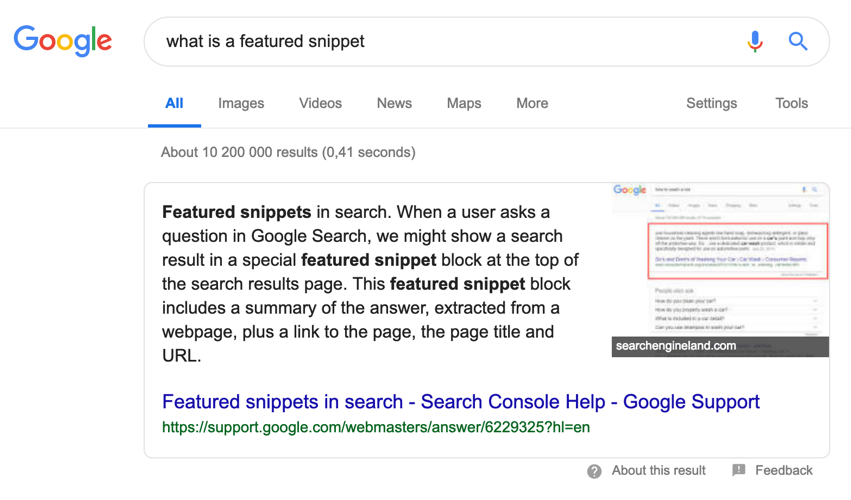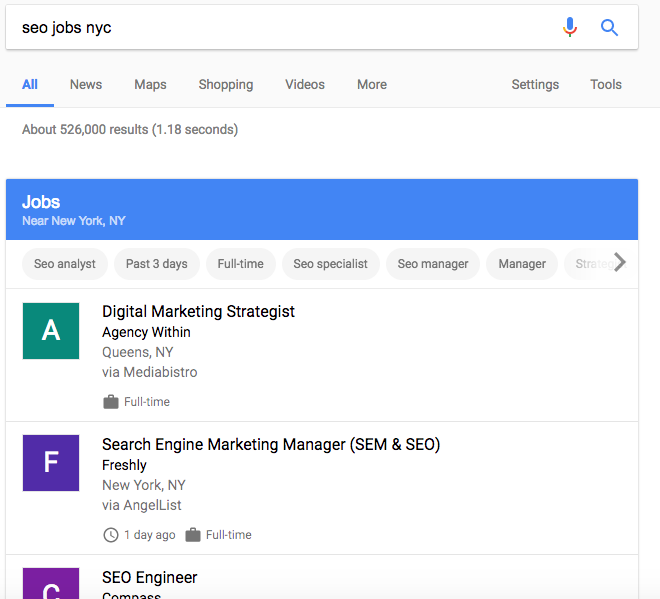abril 26, 2019
An analysis of industry trends
What is Voice Search?
According to Andrew Ng (researcher at Baidu)
“in 2020, 50% of all searches will be voice.”
I don’t think the point is to focus on whether voice will or will not be our main search behavior in the coming years. I believe that search behavior is becoming increasingly fragmented and adjusted for user intent. Voice search will be used in various ways similar to how we operate the web.
Backlinko analyzed 10,000 search queries through a Google home device and compared the voice search with desktop and how the different ranking results were performing in various metrics.
A few of their findings were:
Page speed
Already plays a significant role in search results and even more so in voice. The average website load time for voice search was half the amount for pages generated by a desktop search.
HTTPS sites not using an HTTP are negatively impacted
70% of all results generated from voice search was HTTPS sites. Using these same searched through desktop, 50% had HTTPS.
Short answers but lots of content
Voice searches focuses on short answers, making FAQs’ a natural choice in many cases. When it comes to the full content length, the average word count was slightly above 2,300 words. To rank for voice search, have short and concise answers along with more detailed content.
FAQ pages
Showed up almost twice as many times in voice search than in desktop search.
What is a featured snippet?
A featured snippet is a result that is shown on the start page in 12.3% of all search queries (according to ahrefs study).

The different types of featured snippets are: short summaries that can include an image, bullet lists, numbered lists, tables, etc. Snippets mainly emerge from long-tailed keywords with less search volume. For the snippet to show you need to rank on page one but not as number one. One strategy I’ve tried out is to hijack existing snippets on question-based queries with minor changes. Which is a good way to grab some of the traffic from competitors. In this case, it was easy since the ranking snippet wasn’t optimized for the phrase “när betalar man fastighetsskatt”. Which was the most common question.

Grabbing these snippets is theoretically quite easy, but it doesn’t work in every case. Your strategy should be broad to match a plethora of phrases. Filtering out questions containing snippets are easily done in many tools, I use Ahrefs.
1. Identify top 10 ranking keywords.
2. Extract questions that are asked including these keywords.
3. Filter out featured snippets.
4. Add the question in a heading preferably H1 or H2.
5. Make sure you answered the question clearly in the text and
6. Have a better and more precise answer than the current snippet.
What is schema and how can we use it?
Schema has been around for a long time. It can either be used with structured data or a JavaScript Object Notation (JSON). It helps Google understand our websites better, and therefore reward you in various ways for using it, one way is the rich snippet which is a populated search result.
Tools: Google’s own page is slightly more pedagogic then (schema.org) and they have a great testing tool.
Below are a few schemas I often see missing on websites. Some of it can be done in search console but I prefere having it directly in page templates.
Sitelinks search box
Most websites have a search function, and when gaining traffic there is a high probability of getting a sitelinks search box. By adding a JSON schema script, you will send the user into the website instead of a simple “site:search phrase” on Google.

Breadcrumbs: Breadcrumbs by itself have many positive synergies and using the schema will clarify the structure to the user and search engine.

Q&A
The schema for a Q&A page can have a neat view in Google showing as a large box directly in the SERP. However, I have only seen it on examples that Google has revealed.
Job posting
Showing our job posts directly on Google when someone is searching for employment is a feature not available in every country. Hiring is an important KPI for businesses, and it’s not easy. I would love it if Google launched this feature in Sweden.

Videos
Shows the video directly in SERP.

Product pages
You’ve all seen the snippets.
Events
This one will not only show as a rich snippet when searching for the event but also in the info panel on brand search.
Local business
Get the local details out on into the knowledge panel about your brand when people search for it.
What is Mobile first index?
Google rolled out the so-called Mobilegeddon in 2015, making mobile friendliness a ranking signal. Though I believe few of us experienced the geddon, it was a good move to get those websites mobile friendly. Google’s next step is to launch a mobile-first index. This means that Google will crawl websites as they are shown in the mobile version and index thereafter.
The mobile first index can be summarized into five parts:
1. Responsive web
There are other solutions, but responsiveness is the absolute preferred solution.
2. Mobile design
Having a responsive website does not mean that we are working with mobile design. Having a mobile-first strategy in UX is more important than ever, and we need to keep on working with our mobile users. Google was early to roll out mobile recommendations in search console such as font size and if areas are too small to click.
3. Content
Google will look at the mobile version and index it afterwards if the content is not shown, they might not look at it entirely. Showing the same content on all versions of a website is vital. Experience and SEO should always be balanced. At times we may have to put content in tabs or similar, this is fine but make sure to hide it in CSS and not in JavaScript.
4. Page speed
If we check any website on Google page speed, it’s too common that we get a lower score on mobile then on desktop. In a pure mobile-first strategy that number should be the other way around or equal. Page speed is a significant ranking factor. The main thing to optimize here that would probably make a difference on many websites are the images. It’s very simple, keep them under 100K.
5. Localize it
Perhaps this one is not really about mobile first index but more about mobile behavior. When people use phones they intend to find an address, work with local SEO such as listings.
Create deeper content
“Content is king” has been an SEO-saying for a long time. Over the years I’ve probably been responsible for both good and bad content that has only served the purpose for ranking on a keyword. I even managed to get a site panda penalized (or filtered) once. Fortunately, it was an experimental site, so not too much damage done. I’m happy to say we are past the era where mass producing content is the strategy worth utilizing. Creating more-in-depth content by using original research is the way forward.
Moz and Buzzsumo looked at the correlation between links and social media in one million articles. They did this to understand if there is a correlation, but also to get a deeper understanding of what kind of content engages people.
We conclude that if you want to create content that achieves a high level of both shares and links, then you should concentrate on opinion forming, authoritative content on current topics or well researched and evidenced content.
• List posts and videos had the highest average number of shares.
• “Why?” posts had the highest correlation between shares and links.
• The longer the articles were, the higher the number of shares and links, but
• The correlation was the highest at 1000 to 2000-word articles.
Deeper content to me does not necessarily mean longer but more to think about the purpose of the content and your research.
Summary
Whether it’s showing up on a featured snippet or in voice or just creating content, the best way to move forward is to get a better understanding of what questions our users are asking. The first step is to to create a question-based keyword analysis. Here’s a great way to illustrate questions, but for more accurate data I recommend either keywordtool.io or Ahrefs.








